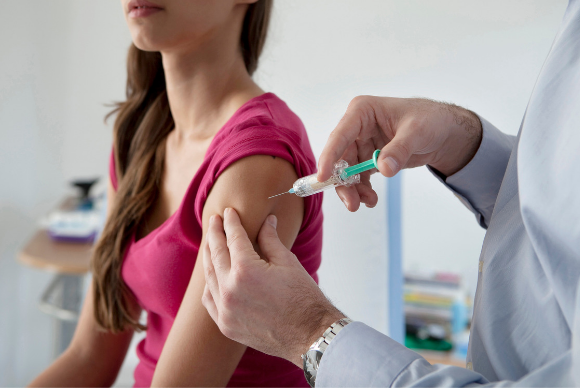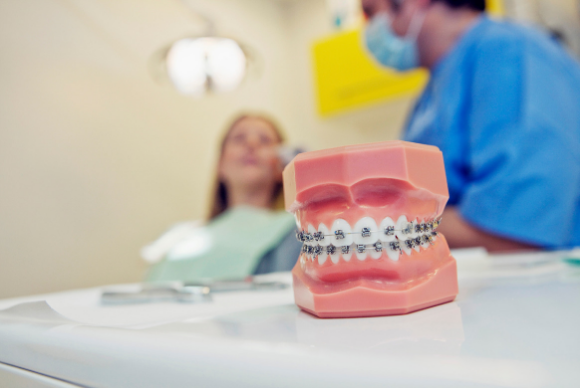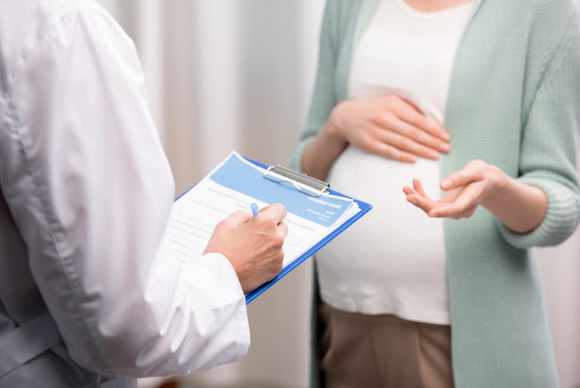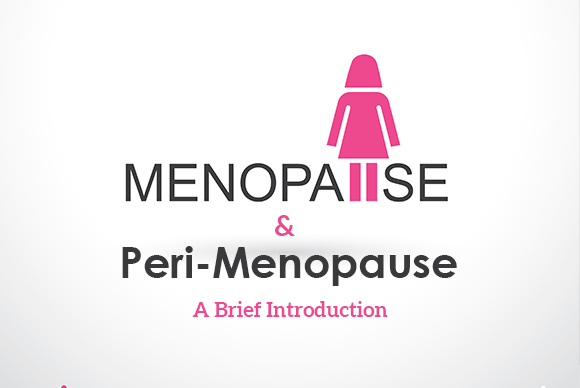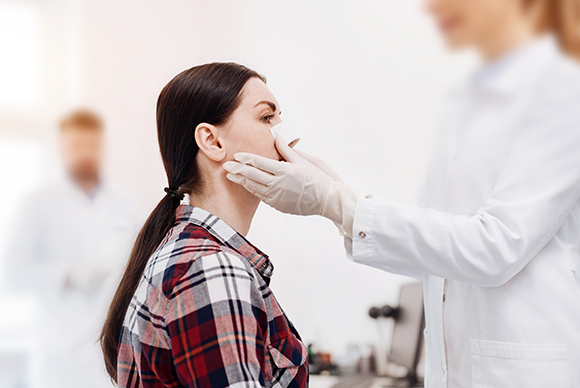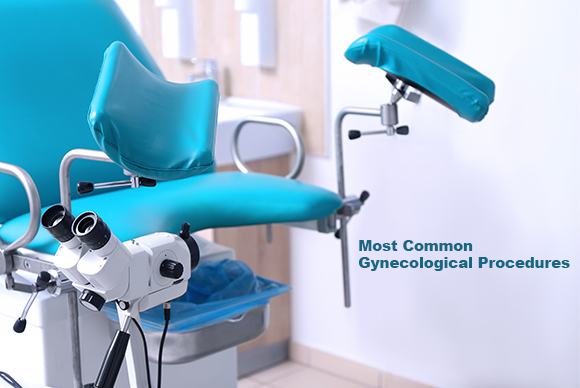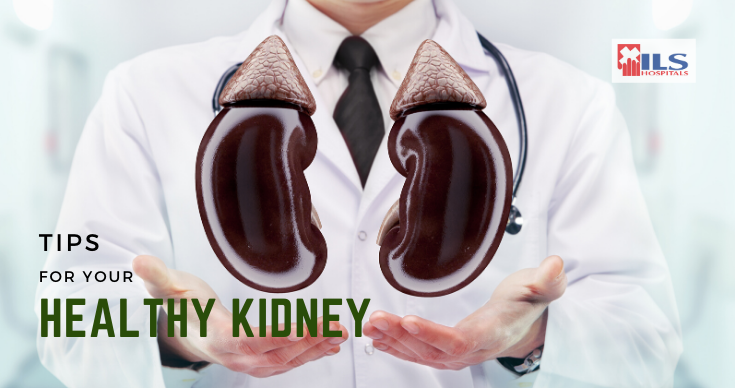Risks Of Untreated Clinical Depression And Why You Should Seek Help In Time
We all have experienced depression from time to time and thankfully, we often are able to come out of it with our will and little help from friends and family. But the term clinical depression is something can that needs extensive medical treatment from an expert psychiatrist. Let’s check out the risks of the same if it is left untreated.
1. Suicide
The most feared risk of untreated depression is suicide. It includes having suicidal thought as well. Many individuals start looking for ways to end their life, or might also picture them carrying it out too. Though being involved in violence is somewhat rare, severely depressed individuals can cause harm to others as well, if they are provoked or evoked.
2. Self Injury
Several individuals engage in self-injury in order to cope with their depression. It includes hitting head on the walls or hard surfaces, burning, clawing, skinning, cutting or ingesting some toxic substance. In such cases, even when some individual is not actually considering suicide, these harmful activities can result in severe injury or even death, accidentally.
3. Addiction
It is not uncommon to find people drink or smoke or even take drugs to cope up with their depression. For clinical depression, this addiction becomes even worse. Such individuals try to subdue their consciousness with substance abuse. This, in turn, can bring many medical threats to them. In many cases, its overuse has been found to lead towards death and deterioration of health.
4. Poor Performance
As depression makes people drenched out of energy, make them unable to focus or even perform the capability, it is almost inevitable to find its result in everyday life. Let it be academic or workplace performance, the results often are too poor as compared to normal.
5. Reckless Behavior
Depression might make people let their guards down, as they are not certain they want a better tomorrow. These individuals might engage in action without considering their consequences. It includes reckless driving, doing dangerous recreational activities, etc.
6. Relationship Issues
Depression deteriorates personal relations the most. It causes rifts, fights, hopelessness in a relationship and affects their family’s mental health as well. For married people, it can lead to even separation or divorce. When such individuals also have children, it dis-balance their growth and emotional health drastically.
7. Poor Health
Depression leads to many health complications, some directly and some indirectly. For instance, insomnia and fatigue directly result from depression and long term depression can give rise to weight gain, high cholesterol and other complications.
Can Depression Be Cured With Timely Treatment
Thankfully, yes! Treatment for depression includes sessions with expert psychiatrists, group session, medicines and shock treatment in severe cases.
On behalf of ILS Hospitals, we would like every individual to evaluate their mental health once in a while, just like they do for their physical health. Remember, the depression is just a phase that can be overcome with help, modern medicines are more than capable of resolving it for good if it is availed at the right time.
A Brief Introduction About Cervical Cancer Vaccination
Cervical cancer is the second most common form of cancer in women in India, after breast cancer. Cervical cancer refers to the malignancy found in the cervix (the lowermost portion of the uterus) of the reproduction system in women. Though cervical cancer affects older women of age 50 or above the most, many gynecologists confirm that women with the same have been diagnosed in their early 30s as well. Let’s understand regarding many of its aspects in details along with cervical cancer vaccination.
Cervical cancer might project no symptoms at first, but the advanced stages often show some symptoms such as vaginal discharge with blood or strong smell, bleeding in postmenopausal women or during times other than on periods, pelvic pain and so on. Though these symptoms might indicate some mild infections as well, it is always wise to get it checked to rule out the possibility of cervical cancer.
Cervical cancer occurs due to Human Papillomavirus Infection (HPI). It can be prevented effectively with the HPV vaccine. It usually takes 2 to 3 shots to complete the dosage. It is usually advised for young girls of age group 9-15, but can also be recommended to women reaching until the age of 25 or even more. A thorough consultation is advised to consider the same with an expert gynecologist, in depth.
Cervical cancer vaccination is not fully effective for women above the age of 25, particularly if they are already sexually active (It is true for even the younger girls). The reason being, the vaccination loses its effectiveness as women grow older, and moreover being engaged in sex, might already have exposed them to the infection, makes will make the vaccine considerably. However, the HPV vaccine can help prevent many other diseases of the reproductive tract as well.
Cervical cancer vaccination offers protection malignancy in the cervical region. But as HPV virus also can cause cancer in the vulva and vagina, this vaccination protects the women against these as well along with genital warts.
However, there are other measures that can help with early detection of cervical cancer too. Pap smear is a screening that collects sample cells from the cervical cavity. It is then evaluated under a microscope. In case they exhibit any changes in their structure, it might be indicating cancer and thus, timely treatment options can be availed for it.
HPV vaccination is effective and safe. The only side effects that have been found in some cases are pain, swelling, and redness in the site of the injection. However, these are mild and temporary and overall, its advantages surpass the mild discomfort.
ILS Hospitals offers HPV vaccination to fight cervical cancer effectively. We urge parents of every young girl to seek consultation with an experienced gynecologist to consider HPV vaccination for their daughters to have a cervical cancer-free life ahead. For women who are older are also advised to take proper measure to mitigate the possibility of cervical cancer in their future.
8 Most Common Orthodontics Conditions To Watch Out For
‘A smile can often fix many difficult situations’. We are all familiar with this phrase. However, there are many threats that loom over this perfect smile of yours. Of course, the germs, cavity, and plaque built up deteriorate your dental health, but some misalignment can also hamper your perfect smile too.
Today, we are going to present some most common orthodontics conditions, but before that, we will explain what is orthodontics, in brief. Orthodontics is a special branch of dentistry that deals with fixing malalignments of teeth, whether it is due to defect or injury.
Crowding Of Teeth
It occurs when there is not enough room for all the teeth. This arises when the jaw is either underdeveloped or is just a little small as compared to the teeth. As a result, the teeth overlap one another and can cause some dental problem as it becomes tricky to clean them thoroughly.
Spaced Teeth
This is just the opposite of the previous condition. In this, the jaw is rather big as compared to the space needed by the teeth. It can cause food particles to stuck in between and also often happens to be unattractive to look.
Overbite
Usually, the upper plate is usually protruded over the lower one. However it became a problem, if this protrusion is too steep as compared to normal skeletal build, an orthodontic condition, we call it as an overbite. It causes difficulty in chewing in extreme cases.
Under-bite
This is just the opposite of the previous case. Under-bite refers to the arrangement when the lower jaw protrudes over the upper jaw. It affects the overall facial look and might add some difficulties in chewing.
Cross-bite
This is a combination of the previous 2 conditions. In this, some of the teeth are aligned as overbite while some are aligned as under-bite. It might give a rather unnatural look to the dental plate and might lead to some dental conditions.
Open Bite
In this condition, the teeth of the upper and lower jaws do not meet one another. It makes chewing a much difficult task, which often adds excessive pressure to the other teeth. It might happen due to persistent thumb suckling as a child.
Hypodontia
This is a case when one or more teeth naturally do not form and leads to extra spacing in the palate. If only a couple of teeth are missing, it can be easily fixed with braces, which spreads them out evenly.
Hyperdentia
This is just the opposite of the previous condition, in which there are one or more extra teeth than ideally supposed to be. If it does not cause any dental difficulty, It might be left untreated, but otherwise, it often needs to be surgically removed.
These conditions can be addressed effectively with the treatment from expert orthodontics. It might be okay to live with them if its severity is minor and posses no discomfit or trouble. However, in many cases, untreated orthodontics can lead to premature wearing of teeth and dental trauma, and speech difficulty. It is also crucial to note that orthodontics treatment is most effective when they are availed at an early age. However, it is never too late to resolve a health condition.
5 Useful Tips For A Healthy Motherhood Ahead
Mother is someone who holds us in her belly for 9 months, in her arms for three years and in her heart for a lifetime.
These few words are truest to its sense. Indeed there is no one like a mother. And today, we are going to offer a few useful tips as offered by leading gynecologists of ILS Hospitals, a renowned hospital in Kolkata, which will help you to have a safe pregnancy and childbirth ahead.
1. Reassure The Baby’s Heath
Get the primary test and prenatal scanning to ensure that your baby is doing good. Your prenatal scan tells much more about your pregnancy that you might realize. It reassures the pregnancy, number of babies you are expecting and a possible due date as well. Avail a baby scan from the best maternity hospital or a clinic with an expert gynecologist.
2. Eat Right At Right Time
Eating nutritious food is quite important during pregnancy. Not only you should be eating more, but you have to focus on consuming all the crucial nutrients as well. An expert gynecologist or obstetrician will guide you towards having an ideal diet chart for a healthy mother and child. Apart from a prenatal supplement, eat lots of fresh fruits and veggies, but remember to avoid the ones that are bad for your pregnancy (like papaya).
3. Stay Hydrated
You must be aware that pregnancy makes you ‘pee for two’. However, it is crucial that you drink for two as well. Staying hydrated will help keep your amniotic fluid in balance and also help you deal with nausea and morning sickness. Always keep a bottle of water you and keep taking sips every now and then. You can also consider having fresh juices and coconut water etc, to help intake more water.
4. Remove Few Things From Diet Chart
If you are engaged in bad habits like alcohol, smoking, etc, pregnancy might be the right motivation for you to quit it (and for your partner’s too). The harmful toxin of these, not only affect your health but your baby’s health as well. Moreover, try to limit the amount of caffeine you intake as well, as it too can cause some complication in your pregnancy.
5. Educate Yourself And Others
During pregnancy, you are never alone and you are not alone, going through it. So, consider joining a prenatal class. They offer several helpful tips on pregnancy, childbirth, nursing, and early parenting. Moreover, such help groups can offer assistance in more than one way.
We urge every budding mother and her family to take special care of her along with her baby’s. We, at ILS Hospitals, offer the best medical assistance and care for the expecting mother with our expert gynecologist and obstetricians. Moreover, we are also ready with neonatologist and pediatrician to take care of the infants, if they need it.
How Pregnancy Makes Hernia A Likely Possibility In The Future
Pregnancy is joyous news for every parent-to-be. However, it might bring several complications, either during pregnancy or after childbirth. Being in touch with best maternity hospitals will ensure that you can deal with these complications, effectively. However, some complications such as hernia can surface at any point in time, during or even after pregnancy period. Before understanding their connection, let’s understand what a hernia is.
What Is A Hernia?
A hernia is a medical condition in which a portion of the intestine or internal tissue pushes through the outer membrane. This can happen to any individual, however, there are many risks facts that makes its occurrence more likely. These risk factors include previous surgery or injury, previous hernia, pregnancy, obesity, and many others. Though hernia is not life-threatening in its early stages, it can lead to a severe complication, if it is left untreated for long.
How Pregnancy And Hernia Are Related
A hernia can lead to extra pressure built up in the abdomen, which is inevitable during pregnancy. Thus, there is always some chances of developing hernia for women during pregnancy. The protruded belly button during pregnancy mostly resolves after childbirth. However, many a time, it stills stays protruded as a warning sign of a hernia in the near future.
Though even a single pregnancy is a risk factor of hernia, the chances increase with multiple babies, as twins, triplet or more will, obviously exert more abdominal pressure. Moreover, having multiple pregnancies uplift the chances of hernia, particularity if the previous baby was born with the help of cesarean delivery.
Many a time, a hernia can bulge during labor as well. It is particularly true for a natural birth, as the pregnant women need to exert Herculean amount of pressure to deliver the baby. This push can also prompt a hernia simultaneously or pretty soon enough.
When Can Hernia Occur, After Pregnancy?
Sometime a hernia can appear soon after birth, or even during pregnancy. But is might onset after quite some time after childbirth. Sometimes, the hernia is a result of secondary factors such as long-term weight gain after pregnancy as well. Nevertheless, the risks of having hernia are associated with previous childbirth.
What Should Be Done?
Though neither every pregnancy leads to hernia nor every hernia occurs due to pregnancy, they are sometimes interrelated. This is why every woman who gave birth in the past should be aware of even the minute changes in their body. A visible lump should be treated as a hernia. A thorough, physical examination is often adequate to determine its nature.
Hernia treatment usually comprises of hernia repair surgery itself. This surgical procedure pushes the protrusion back in the cavity and stitches the site close. In some cases, if the opening is quite big, the surgeon uses a surgical mesh to mitigate the possibility of hernia in the future.
ILS Hospitals offers quality hernia treatment to resolve it permanently for good. For more information, visit us today!
Menopause and Peri Menopause – A Brief Introduction
Menopause is the natural cessation of the menstrual cycle in women. It marks the termination of reproductive age. The ovaries are reproductive glands which store eggs and release them one by one each month through the fallopian tube. It also releases the female hormones estrogen and progesterone. Altogether it controls the menstrual cycle and ovulation cycle, both contributing towards natural conception. Gynecologist defines menopause as the phase when the ovaries stop producing the same.
Read more – Hormonal Issues Faced By Women After Menopause
In general, it occurs in the late 40s to early 50s and gives an indication for a few months (sometimes even years) before it. However, it can also happen promptly due to surgical removal of ovaries or uterus or due to any illness. Peri-menopause, on the other hand, is the natural phase that begins 3-4 years before the menopause, but in many cases, it can onset even from the 30s. Women can still conceive and give birth successful while being in peri-menopause.
Several women experience some mild to severe discomfort and annoying symptoms during peri-menopause and menopause.
- A sudden, brief sensation of warmth all over the body, more commonly known as hot flashes
- Vaginal dryness and discomfort during sex
- More frequent urination or the urge to do so
- Persistent insomnia or interrupting sleep cycles
- Mood swings, that might also include periodic or unpredictable depression
- Temporary memory lapse, difficulty in concentration
- Night sweats or sudden cold flash
- Much heavier or lighter, or irregular periods
- Breast tenderness or change in size
- Change in Premenstrual syndrome
- Weight gain along with pain in joints and muscle
- Losing interest in intimacy
- Hair loss
These systems are the indication of ovaries producing less estrogen. In case any women encounter 3 or more of these symptoms for about 3-4 months and is in her late years of childbearing age (or even during), they are highly recommended to seek a gynecologist for a detailed investigation.
Menopause is NOT a disease and cannot be avoided. It is a natural, obvious phase that will onset and eventually be over. Peer to peer talk is quite helpful for most women and so is having awareness related to the changes during menopause. However, menopause comes as a hard time for many women. It is crucial to seek treatment in case the symptoms bother. At ILS Hospitals, our expert gynecologists offer extensive treatment, help, and guidance for women going through the phases of menopause.
What Is Painless Delivery And How It Is Carried Out
The wonderful journey of motherhood begins with pregnancy and childbirth is a crucial event in it. Babies are coming into the earth since the dawn of humankind, sometimes with little to no assistance, all through natural birth. Gradually came the technique of cesarean birth, which offered some advantages for complicated birth. Nowadays, ‘painless delivery’ is being offered by many advanced obstetrician and maternity hospitals. Let’s understand what painless delivery is and how it is carried out.
The labor phase is a painful and traumatic experience for many mothers. The birthing method is a crucial factor for the same, but it also depends on the pain tolerance level of the mother and overall conditions. But thankfully, the expert obstetricians and medical science can help ease the pain these days, with the help of ‘painless delivery.’
What Is Painless Delivery?
Painless delivery is sort of a ‘nickname’ for a natural birth with the administration of a special drug called epidural. Epidural reduces pain significantly in a specific area. In case of labor, it is administrated right in the spine, cause a somewhat numbness in the lower part of the body. With epidural in your system, you are still awake and feel the contraction and can push your baby.
It is induced for natural birth as per the will of the mother or as necessity felt by the doctor. It is also administrated in case of carrying out a C-section. Even though some minor risks such as back pain, fever, and headaches are associated with the epidural, they are extremely rare and poses no long term complications.
Is Painless Delivery totally Painless?
Well, definitely not. While you are welcoming your little baby in the world, it is inevitable to feel some pain. With no epidural, the magnitude of this pain is tremendously high for many mothers. This magnitude can be significantly reduced with the administration of the epidural. With less severe labor pain, you can concentrate more on giving birth and make it a comfortable experience altogether.
Should You Consider Getting A Painless Delivery?
There is no definite yes or no answer for the same. You, along with your partner and obstetrician need to discuss all the possibilities of birth. However, in case you have a low tolerance for pain or becoming a mother for the first time, you should definitely be aware of the same and consider it as one of the options.
4 Most Common Types Of Reconstruction Surgeries
Reconstruction surgery, as the term clearly indicates, is a surgical procedure that addresses and corrects body deformities, that can happen either due to accidental injury, congenital defects or any other illness, including cancer.
Here we present some of the most common reconstruction surgeries.
Hand And Feet Reconstruction Surgery
These surgical procedures are helpful to correct deformities in hands and feet. These are done mostly in order to correct webbed feet, remove extra digits and other congenital defects. Also, these are quite useful to reconstruct the deformities caused by hand and feet cancers. Moreover, any injury or trauma to hand and feet can also be addressed through these surgical procedures.
Breast Reconstruction Surgery
These are a few types of cosmetic surgery, such as breast augmentation surgery, breast reduction surgery, breast lift surgery and all. Though many people believe that breast surgeries are just for enhancing the beauty and more attractive body contour, breast reconstruction surgery is quite useful after a mastectomy (surgical removal of breasts to treat cancer), both physically and psychologically.
Cleft Lip And Palate Repair Surgery
Cleft lip and palate are the two most common congenital defects in babies. These two defects can either occur separately or together. It requires reconstruction surgery to correct these. In fact, in case these repair surgery is availed at a young age, the scars almost get dissolved by the time the child reaches around the age of puberty.
Rhinoplasty
Rhinoplasty is more commonly known as nose-job. It is a cosmetic surgery that fixes the deformity and corrects a misshaped nose. Though it is often considered only to improvise the facial feature of the individual, rhinoplasty does more than that. A misaligned nose can also lead to hindrance in breathing, making rhinoplasty a crucial procedure.
Apart from these reconstruction surgeries, having scar revision, microsurgery and flap procedure is quite common as well. Scar revisions are done in order to enhance the natural appearance of skin, which has been scarred either due to any surgical procedure or accident. The microsurgery and flap procedure, on the other hand, is done in order to replace the skin of the body that has been damaged due to accident, illness or surgery.
Even if, reconstruction surgery might not be able to restore the exact appearance of any body part or a scar, it improvises overall appearance significantly. Thus it helps the individual both physically, aesthetically and psychologically.
Most Common Gynecological Procedures
Gynecological conditions are quite common and thankfully the modern medical science can address most of them effectively. While some can be treated effectively with topical medication, some can be evaluated through non-invasive techniques, but for other condition, it becomes inevitable to use invasive techniques. Most of these procedures (both invasive and non-invasive) are carried out by expert gynecologists and obstetricians in maternity clinic and hospitals.
Here we list out some common gynecological procedures.
Dilation And Curettage
More commonly known as D & C, it is a procedure in which the doctor dilates the cervical cavity in order to remove the lining of the uterus through curettage and extract it out of the cavity through suction. It is used to diagnose any polyps or abnormal growth in the cervical cavity and it is also done to terminate any molar pregnancy and remove the fetal tissues completely after a miscarriage.
Pap Smear
This gynecological procedure should ideally be availed by every woman after the childbearing age and onwards. This procedure including extracting some tissues from the cervix using a speculum. Going for routine Pap smear can help with early detection of any malignancy in the cervix.
Breast Ultrasound
Even though breast cancer is quite common, having lumps in the breast tissue is quite common as well. Whether or not it has malignant growth, can be evaluated by ultrasonography in its original stages. A tumor that keeps growing along with warning signs like nipple discharge and pain, should be diagnosed further.
Hysteroscopy And Hysterectomy
Hysteroscopy is a non-invasive diagnostic procedure to evaluate the presence of any uterine condition. It can also offer useful insights like locating an IUD, abnormal tissue growth, evaluate reasons for repeated miscarriages.
Hysterectomy is the surgical procedure to remove the uterus if it is needed to ensure better health of the patient. Though is sound scary, it is becoming quite common these days and as per gynecologists, they are safe as well if availed form a quality healthcare provider.
Cervical Cryosurgery
Polyps and tumors in the cervix are quite common these days. Cervical cryosurgery is done for removing the tumors that do not resolve on its own. This procedure uses the cryogenic technique to freeze a section of the cervix and remove pre-cancerous cells from the lining of the cervix.
In case you need to undergo any such gynecological procedure or looking for an expert opinion to consider the same, get in touch with our highly experienced gynecologist and obstetrician at ILS Hospitals.
Super Tips To Keep Your Kidney Healthy
Kidneys are a pair of organs that filter the blood and removes any waste and toxins from the body. However, as even ‘one healthy kidney’ can function pretty well, detection of kidney disease becomes quite tricky. Here we bring some super tips, as per nephrologists, to keep your kidney healthy and disease-free.
1. Drink Plenty Of Water
Staying hydrated is always beneficial for everyone. This is particularity true to keep the kidneys healthy and active. So, try to include at least 1.5 to 2 liters of water each day. It helps the urinary system to remove toxins from the body as well reduce the chances of developing kidney stones and other common complications of kidneys.
2. Keep Diabetes In Leash
Diabetes and kidney complications are associated with one another. Thus, it is crucial to keep your diabetes in leash in order to minimize the risks of kidney illnesses in the future.
3. Keep Body Weight In Check
Being overweight brings many complications along with it. Kidney complication is simply one of them. So, staying in shape is a wise way to keep kidney complications at bay. Maintain a healthy body weight by doing physical exercise regularly.
4. Eat Healthy and Wisely
Eating a healthy diet is highly helpful for a healthy kidney. Reduce your salt intake and highly processed food. Instead, include fresh fruits and vegetables. Moreover, in case you are dealing with any kind of discomfort regarding kidney stone or gallstones, it is best to avoid the seeds of the veggies and fruits as much as possible.
5. Monitor Your Blood Pressure Profile
The normal blood pressure ranges from 120 to 80 mmHg. A persistently high blood pressure brings many challenges to kidney’s overall health and functionality. Keeping a tab on your blood pressure level is crucial from time to time.
6. Quit Smoking
Smoking does no good for overall health. Smoking hampers the blood flow to the kidney. Needless to say, when the kidney does not get an adequate blood supply, it affects their ability to function properly. Stop smoking reduces the chances of kidney cancer by about 50 percent.
You are also requested to avail the renal checkup to ensure complete care of your kidneys. Renal checkup packages are available at ILS Hospitals. You are particularity recommended towards the same, in case you have diabetes, obesity, hypertension, or have an immediate family member who also has any kidney complication.












